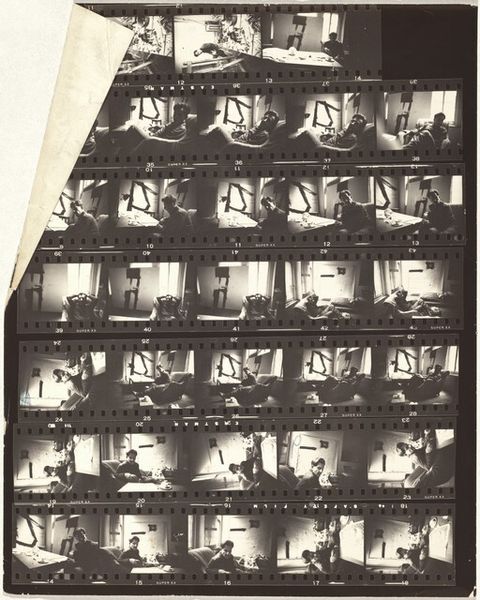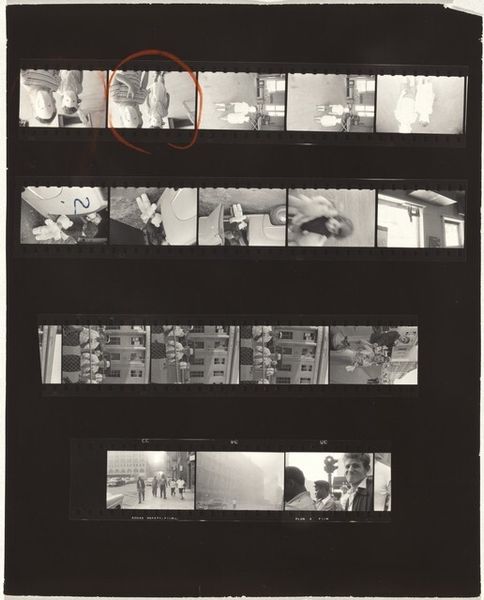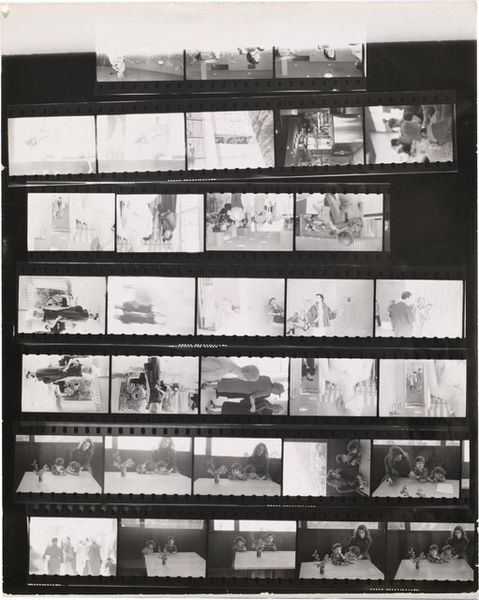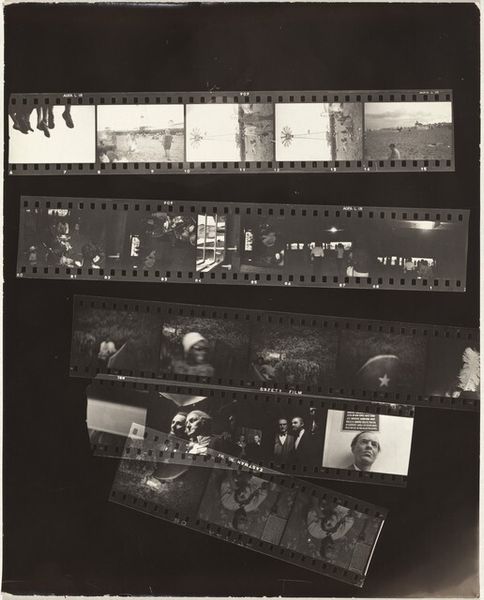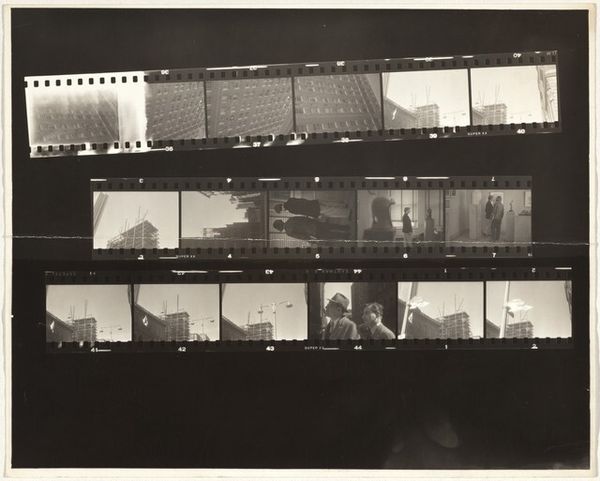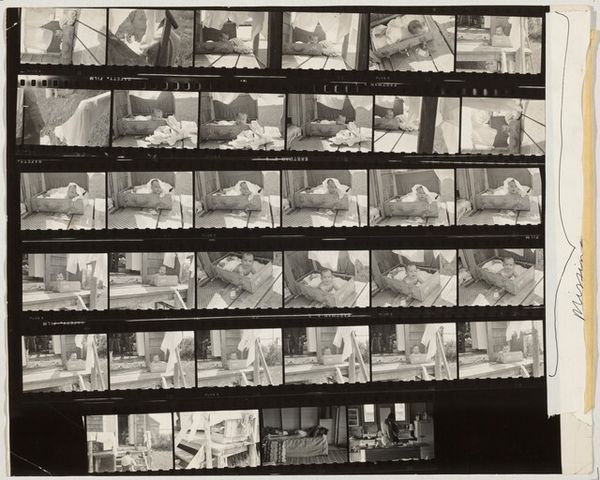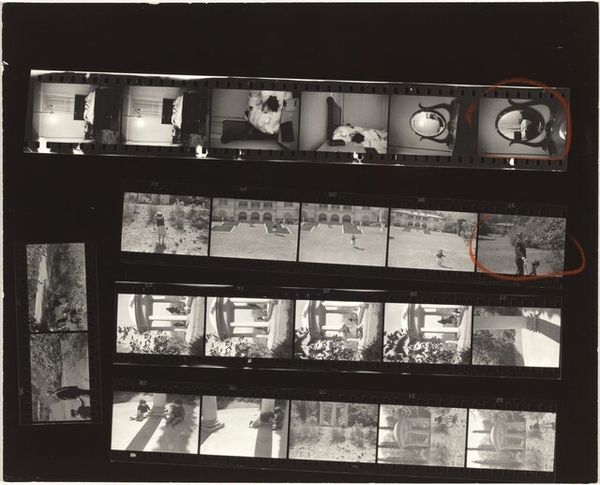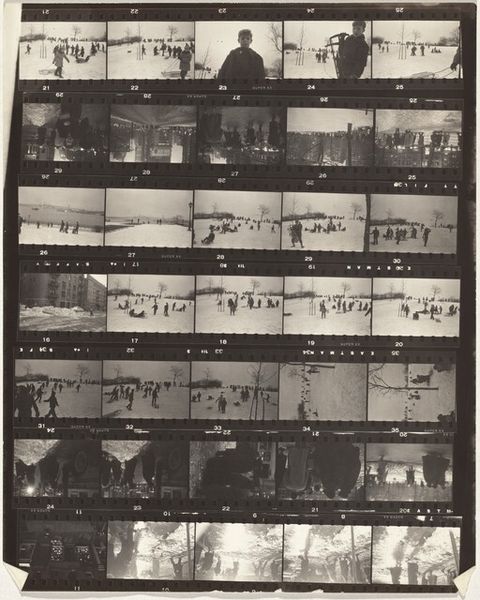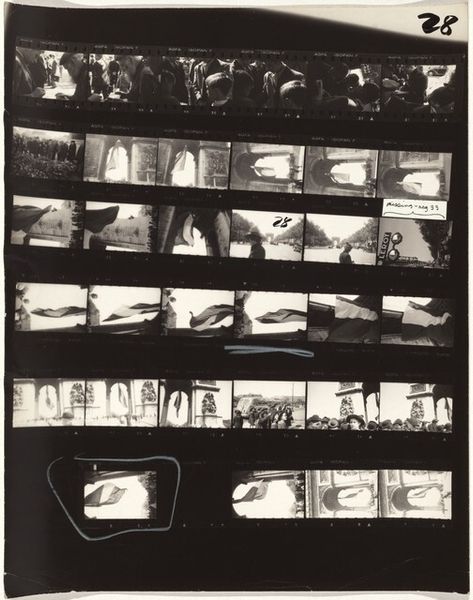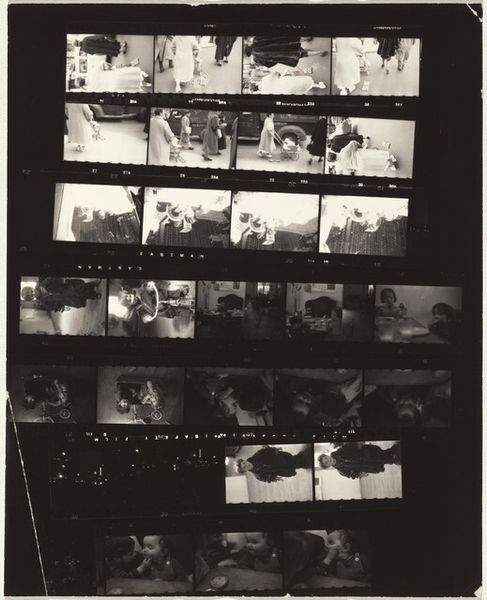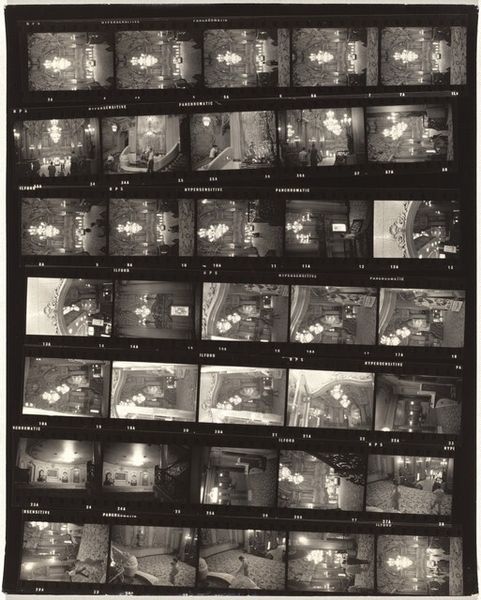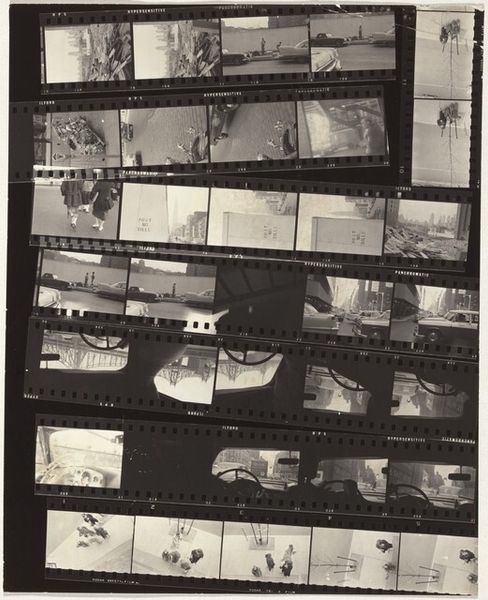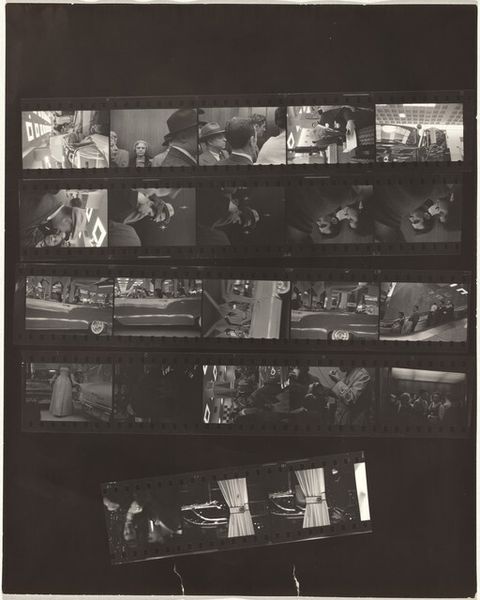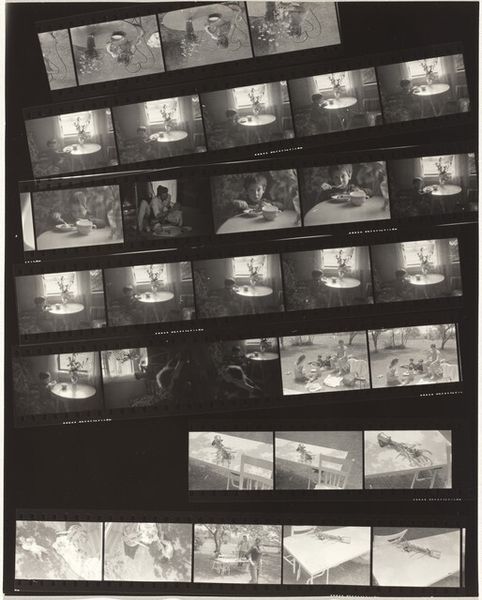
photography, gelatin-silver-print
#
black and white photography
#
street-photography
#
photography
#
black and white
#
gelatin-silver-print
#
monochrome photography
#
monochrome
#
monochrome
Dimensions: image: 21 × 29.21 cm (8 1/4 × 11 1/2 in.) sheet: 27.94 × 35.56 cm (11 × 14 in.)
Copyright: National Gallery of Art: CC0 1.0
Editor: Here we have Richard Gordon’s black and white photograph, "Giant Camera, Atlantic City," potentially taken between 1973 and 1994. The gelatin-silver print depicts what looks like a television screen showing an enormous camera and a woman. I find the image disorienting; it challenges my sense of scale and reality. How do you interpret this work? Curator: The layering here is key. The photograph, already a medium of representation, captures another representational device: a television. Consider the cultural weight of television in the latter half of the 20th century, its pervasiveness in homes and its role in shaping public consciousness. How does the "giant camera" reflected on the screen play with our expectations of photographic truth, particularly within the context of Atlantic City, a space itself constructed for entertainment and spectacle? Is Gordon commenting on the camera's role, the mass media's influence on our perception, and their societal implications? Editor: That’s interesting. So you're suggesting the photo prompts questions about the reliability of images themselves? What purpose it serves, and who it affects? Curator: Precisely. It prompts questions about how media, like photography and television, shape our experience, particularly in carefully crafted spaces like Atlantic City, historically a potent symbol of leisure and escapism, now under a new form of observation. The juxtaposition is hardly an accident. Does it suggest something unsettling or reassuring, as it exposes different forms of control, even within the image-making apparatus? Editor: I see what you mean! I never thought about how Atlantic City being in the title could also lend itself to the question of "constructed reality." I just thought the photo was "trippy", for lack of a better term. Curator: Right. Considering the period, the proliferation of television in American households contributed to both homogenization of culture, and opened access to distant landscapes. Perhaps the photograph asks where does experience end and artifice begin? Editor: This gives me a lot to think about, particularly the interplay between the lens of the camera and the television screen as filters through which we see the world. Thanks! Curator: A fascinating interplay, isn't it? Hopefully the discussion provided new dimensions into understanding the societal contexts through this layered photography!
Comments
No comments
Be the first to comment and join the conversation on the ultimate creative platform.

